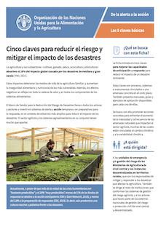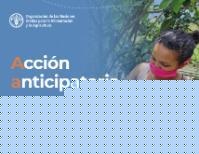Publications
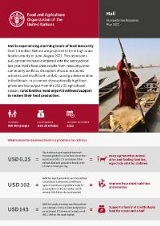
Mali: Humanitarian Response Plan 2022
04/2022
Mali is experiencing alarming levels of food insecurity. Over 1.8 million Malians are projected to be in high acute food insecurity in June–August 2022. This represents a 41-percent increase compared with the same period ast year.
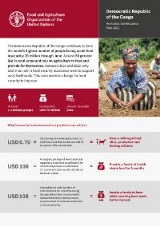
Democratic Republic of the Congo: Humanitarian Response Plan 2022
04/2022
The Democratic Republic of the Congo continues to have the world’s highest number of people facing acute food insecurity: 26 million through June. Around 80 percent live in rural areas and rely on agriculture to feed and provide for themselves.
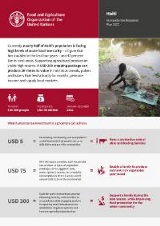
Haiti: Humanitarian Response Plan 2022
04/2022
Currently, nearly half of Haiti’s population is facing high levels of acute food insecurity – a figure that has doubled in the last four years – and 43 percent live in rural areas. Supporting agricultural production yields high returns.
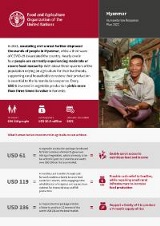
Myanmar: Humanitarian Response Plan 2022
04/2022
In 2021, escalating civil unrest further displaced thousands of people in Myanmar, while a third wave of COVID-19 devastated the country. Nearly one in four people are currently experiencing moderate or severe food insecurity.
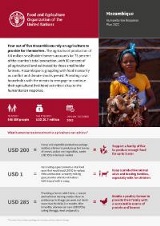
Mozambique: Humanitarian Response Plan 2022
04/2022
Four out of five Mozambicans rely on agriculture to provide for themselves. The agricultural production of 4.6 million smallholder farmers accounts for 75 percent of the country’s total production, with 90 percent of all agricultural land cultivated by these smallholder farmers.

The Sudan: Humanitarian Response Plan 2022
04/2022
Thirty percent of Sudanese are expected to need life-sustaining support in 2022, the highest number in the past decade. A combination of shocks and stressors, including conflict, population displacement and economic decline, has resulted in alarmingly high levels of food insecurity.

Burkina Faso: Humanitarian Response Plan 2022
04/2022
More than half of Burkina Faso is experiencing conflict and insecurity, forcing thousands from their homes, disrupting livelihoods and further aggravating the food security situation.

Guatemala: Humanitarian Response Plan 2022
04/2022
In Guatemala, the most vulnerable populations are subsistence farming families who were severely affected by Hurricanes Eta and Iota in late 2020 and still have not recovered. The effects of COVID-19 and related restrictions further worsened the situation.
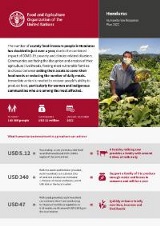
Honduras: Humanitarian Response Plan 2022
04/2022
The number of acutely food-insecure people in Honduras has doubled in just over a year, due to the combined impact of COVID-19, poverty and climate-related disasters.
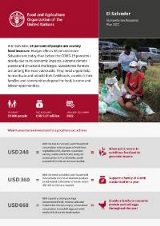
El Salvador: Humanitarian Response Plan 2022
04/2022
In El Salvador, 14 percent of people are acutely food insecure. Hunger affects 46 percent more Salvadorians today than before the COVID-19 pandemic mainly due to its economic impacts, extreme climate events and structural challenges.
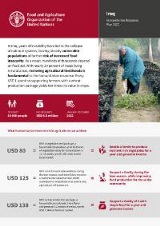
Iraq: Humanitarian Response Plan 2022
04/2022
In Iraq, years of instability have led to the collapse of national systems, leaving already vulnerable populations at further risk of increased food insecurity. As a result, hundreds of thousands depend on food aid.
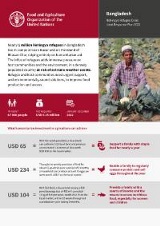
Bangladesh: Rohingya Refugee Crisis Joint Response Plan 2022
04/2022
Nearly 1 million Rohingya refugees in Bangladesh live in camps in Cox’s Bazar and on the island of Bhasan Char, relying entirely on humanitarian aid.
_page_1.tmb-th600x450.jpg?Culture=en&sfvrsn=bdd31059_1)
Madagascar: Humanitarian Response Plan 2022
04/2022
In Madagascar, weather extremes and other natural hazards have decimated agricultural production, hindering access to food. In the Grand Sud, 95 percent of the population relies on agriculture, livestock and fishing for their livelihoods. Investing in these sectors can equip vulnerable families with the means to feed themselves and their communities.

Concept note: Bangladesh
04/2022

Special report: 2021 FAO Crop and Food Supply Assessment Mission to the Sudan
03/2022
Between 19 December 2021 and 14 January 2022, following a request by the Ministry of Agriculture and Forest (MoA&F), the Food Security Technical Secretariat (FSTS), assisted by the Food and Agriculture Organization of the United Nations (FAO), the World Food Programme (WFP) and the United States Agency for International Development (USAID), carried out its annual Crop and Food Supply and Assessment Mission (CFSAM) .
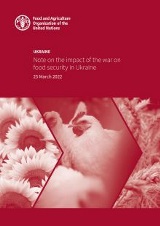
Ukraine: Note on the impact of the war on food security in Ukraine
03/2022
FAO is deeply concerned about the food security situation in Ukraine. The war that began on 24 February 2022 has caused extensive damage and loss of life in key population centres, spread across rural areas, and sparked massive displacement.
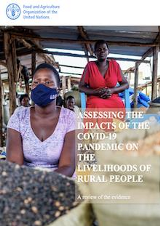
Assessing the impacts of the COVID-19 pandemic on the livelihoods of rural people
03/2022
In this paper we focus specifically on differences in the welfare impacts of COVID-19 on rural livelihoods between countries using nationally representative data that we disaggregate by food system typology.

